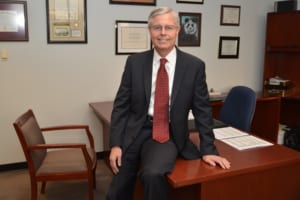Steve Cowman
Appointed CEO and Board Member, Stirling Energy Systems (SES)
How has the recession affected the alternative energy industry?
It’s had a major impact on the solar industry and the renewable energy industry on two fronts. First of all, there are a lot of solar companies that are not going to make it through the current credit crisis because they are going to run out of capital. … You need to have a pretty strong balance sheet at the moment and you need to have a pretty strong parental structure to support you through this. That’s not just solar — that’s a lot of the renewable companies.
The second issue is getting the funding for the projects themselves. That is a huge challenge because these projects are typically between half a billion and a billion dollars in terms of capital requirement. … What’s really impressed me about the Obama Administration and the DOE (Department of Energy) is that they recognize that there is a technical challenge here given where the credit markets are. They also recognize that renewable energy has the real potential to be competitive in price with fossil fuel after three to five years. But to do that (companies) need some help to actually get there. I think the stimulus package, as it’s been outlined, has tremendous potential to help the renewable (industry) in general and the solar (industry) in particular.
Why is Arizona behind other states in developing solar energy?
Arizona is a great state and Phoenix has clearly grown, but it’s grown on the back of a particular focus … real estate, the holiday center, the golf complexes. … It hasn’t really focused on the industrial side of it. I think if you look at what has actually happened to Phoenix over the past 10 to 15 years, there’s been a slow erosion of its industrial and technological base. And some of the very large companies like Motorola, ON Semiconductor, Intel … have significantly slimmed down or have actually outsourced. And they haven’t just outsourced overseas. …
They’ve moved to New Mexico, they’ve moved to Nevada, they’ve moved to California. I think, to be honest, Arizona fell asleep at the wheel. … (it) didn’t really provide the right type of incentives, and I think it has paid the price.
However, I would say that in the last year, there’s been a shock of reality. Obviously, Arizona has seen the biggest collapse in housing prices. It saw the biggest run-up and it saw the biggest collapse, as well. I think of GPEC (Greater Phoenix Economic Council) as being particularly proactive in terms of trying to bring that awareness, in terms of trying to attract (companies). … That (Arizona) Senate bill (1403) that just went through … is significant, but it won’t fix the problem. But, it does show a culture change in the Arizona Legislature in terms of wanting to be more proactive about attracting inward investment at this time.
What do governments have to do in order to get more companies to turn to alternative energy?
There are two things the state has started to do. The first thing they’ve done is they are mandating renewable targets. So, they are mandating to the utility companies that they must have a certain percentage of their power come from renewables. And if there’s not, there will be financial penalties. That’s the stick, if you like. And the carrot that they are actually providing is the stimulus package to help the renewable companies to get the projects in the ground. So they’ve got those two things running parallel.
What do you see in the future for the alternative energy industry?
The potential is tremendous. You have a fantastic manufacturing and engineering base here. … You have a large number of really blue chip, Fortune 100 U.S. multinationals that have established a really strong technology base here. You have Arizona State University that has some fantastic programs, and you have a great environment for people to live in. So, it’s a really attractive place and I have to think that the future will be really good. … (However) there are companies who have worldwide headquarters here but do no manufacturing here — who shall remain anonymous. So, the real challenge for Arizona is how do you get those companies to increase their level of vertical integration and move beyond just having headquarter functions to having manufacturing and design (here)?
What kind of leadership team works best for a company like Stirling?
Ideally, you want someone who brings a well-honed skill set. You want someone who has experience in, hopefully, one or two different areas, someone who has good interpersonal skills. … So it’s your personality, it’s your attitude. … If you have a can-do, we can knock down any barrier to make it work (attitude), you will make it work. … So what’s the ideal executive? The answer is there is not an ideal executive. What you want is a good mix.
-
Vital Stats
- Appointed CEO of Stirling Energy Systems in June 2008
- Held numerous senior management positions at Greenstar Ireland, General Electric, Harris Corporation, General Semiconductor, Vishay Intertechnology, Volex Europe.
- Earned a bachelor’s and master’s degree in engineering from the University College, Dublin and Sheffield University; master’s degree in management science from Trinity College Dublin
- www.stirlingenergy.com




